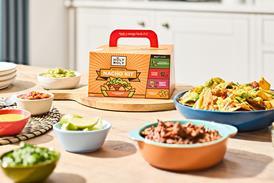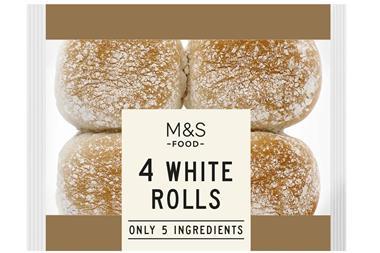Despite cola's grip on the soft drinks sector, the big brands have their work cut out to keep sales on an upward curve. But new flavours and zero-calorie versions may hold the key
The cola market has been on the end of some pretty negative press recently, with claims that the market is losing its fizz. Yet TNS reports that the take-home sector actually increased in value by 5.2% last year. And, according to the Britvic Soft Drinks Category report 2006, sales of all Coca-cola brand variants, which dominate the market, have risen 2% to £893m while sales of all Pepsi brands have grown 5% to £225m.
Coca-Cola Enterprises (CCE) operational marketing director Kieran Hemsworth is upbeat about the market. "Volume is stable at 1.6 billion litres," he says. "Colas are still the national favourite by a considerable distance."
The Britvic report also claims that new flavours were responsible for the majority of growth in the sector and accounted for almost 60% of category growth in the past two years. It's something that Coca-Cola is keen to develop further.
"The introduction of flavoured colas such as lime, lemon and cherry has brought £300m additional value to the sector since 2001, and much of this has been incremental to category sales," says Hemsworth.
While CCE has thrown its considerable might behind new flavours in both standard and diet varieties - using a mixture of limited editions and permanent additions to the brand - Pepsi has so far adopted a far more cautious approach. Distributed in the UK by Britvic, the company has limited new flavours to a lemon & lime variant of its sugar-free Max brand, a Christmas edition punch flavour and, most recently, Pepsi Max Cino, which includes a shot of cappuccino flavouring.
"It is our intent that cappuccino becomes a mainstream flavour," says Britvic category director Andrew Marsden. "Lemon & lime was a great success when it was introduced last year. Cola with coffee flavouring is an interesting trend that's beginning to grow. "
While new flavours have undoubtedly given manufacturers and retailers something new to talk about and generated valuable sales, the spate of recent launches has not been achieved without criticism from the industry.
Coca-Cola, in particular, has come under fire from a number of sources. One retail buyer says: "It strikes me as desperation if you look at what they've thrown at the market that hasn't stuck. If you keep on throwing loads and loads of things at consumers it ends up creating confusion."
Others believe that the company has rushed the new flavours into stores too quickly and without sufficient marketing support.
Britvic's Marsden is coy about PepsiCo's own plans for spin-off brands: "We reserve the right to introduce strategic flavours when we think they are appropriate, but we won't be launching a proliferation of flavours."
Somerfield category buyer for soft drinks John Place adds: "Short- term limited editions do perform a valuable function, but sooner rather than later you will run out of new flavoured colas and ways in which to spice up fruit carbonates. Genuine new product development is required, and if this is delivered then I can certainly see carbonates fighting back."
Others in the industry are optimistic that evidence of such new product development already exists. "Coca-Cola's introduction of Zero Calorie cola signals that cola's fightback against the decline of recent years will not be fought on new flavour variants alone," notes Princes Soft Drinks marketing director David Patmore.
"Zero Calorie suggests that the cola market still has room for innovation. As a category, cola is still huge, but if it is to reverse consumer perception of it as a treat product, rather than one which has some role to play within a balanced diet, then there will definitely be formulation changes of this nature."
Marsden acknowledges that the cola sector is "statistically unlikely" to see the kind of growth rates of the past decade again, despite the rise in the take-home category reported by TNS. "It is a low-ish growth market, but it has been in low growth for a number of years."
Whatever the future for cola, it will, nevertheless, remain a vastly important sector for years to come.
Read more
Focus on Soft Drinks (May 2006)
The cola market has been on the end of some pretty negative press recently, with claims that the market is losing its fizz. Yet TNS reports that the take-home sector actually increased in value by 5.2% last year. And, according to the Britvic Soft Drinks Category report 2006, sales of all Coca-cola brand variants, which dominate the market, have risen 2% to £893m while sales of all Pepsi brands have grown 5% to £225m.
Coca-Cola Enterprises (CCE) operational marketing director Kieran Hemsworth is upbeat about the market. "Volume is stable at 1.6 billion litres," he says. "Colas are still the national favourite by a considerable distance."
The Britvic report also claims that new flavours were responsible for the majority of growth in the sector and accounted for almost 60% of category growth in the past two years. It's something that Coca-Cola is keen to develop further.
"The introduction of flavoured colas such as lime, lemon and cherry has brought £300m additional value to the sector since 2001, and much of this has been incremental to category sales," says Hemsworth.
While CCE has thrown its considerable might behind new flavours in both standard and diet varieties - using a mixture of limited editions and permanent additions to the brand - Pepsi has so far adopted a far more cautious approach. Distributed in the UK by Britvic, the company has limited new flavours to a lemon & lime variant of its sugar-free Max brand, a Christmas edition punch flavour and, most recently, Pepsi Max Cino, which includes a shot of cappuccino flavouring.
"It is our intent that cappuccino becomes a mainstream flavour," says Britvic category director Andrew Marsden. "Lemon & lime was a great success when it was introduced last year. Cola with coffee flavouring is an interesting trend that's beginning to grow. "
While new flavours have undoubtedly given manufacturers and retailers something new to talk about and generated valuable sales, the spate of recent launches has not been achieved without criticism from the industry.
Coca-Cola, in particular, has come under fire from a number of sources. One retail buyer says: "It strikes me as desperation if you look at what they've thrown at the market that hasn't stuck. If you keep on throwing loads and loads of things at consumers it ends up creating confusion."
Others believe that the company has rushed the new flavours into stores too quickly and without sufficient marketing support.
Britvic's Marsden is coy about PepsiCo's own plans for spin-off brands: "We reserve the right to introduce strategic flavours when we think they are appropriate, but we won't be launching a proliferation of flavours."
Somerfield category buyer for soft drinks John Place adds: "Short- term limited editions do perform a valuable function, but sooner rather than later you will run out of new flavoured colas and ways in which to spice up fruit carbonates. Genuine new product development is required, and if this is delivered then I can certainly see carbonates fighting back."
Others in the industry are optimistic that evidence of such new product development already exists. "Coca-Cola's introduction of Zero Calorie cola signals that cola's fightback against the decline of recent years will not be fought on new flavour variants alone," notes Princes Soft Drinks marketing director David Patmore.
"Zero Calorie suggests that the cola market still has room for innovation. As a category, cola is still huge, but if it is to reverse consumer perception of it as a treat product, rather than one which has some role to play within a balanced diet, then there will definitely be formulation changes of this nature."
Marsden acknowledges that the cola sector is "statistically unlikely" to see the kind of growth rates of the past decade again, despite the rise in the take-home category reported by TNS. "It is a low-ish growth market, but it has been in low growth for a number of years."
Whatever the future for cola, it will, nevertheless, remain a vastly important sector for years to come.
Read more
Focus on Soft Drinks (May 2006)



















No comments yet